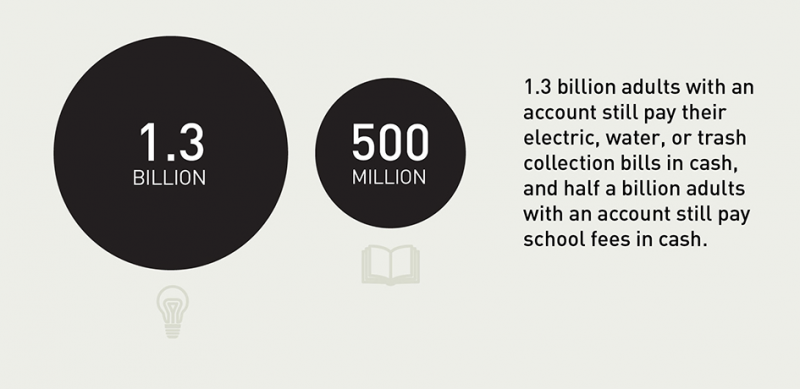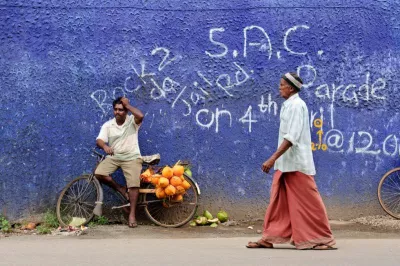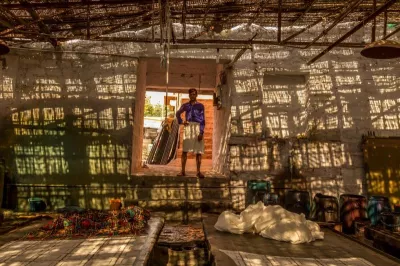Unlocking Access to Critical Services Through Digital Payments
By now you’ve most likely seen the headline from the latest Findex data: the number of unbanked adults has dropped from 2.5 billion in 2011 to 2 billion in 2014. This is great news and shows remarkable progress. But work still remains to ensure that everyone is not only financially included, but also using their account and benefiting from access to the formal financial system. So what’s next?
Let’s take a step back from the idea of banks and accounts. Put yourself in the shoes of one of the 2 billion unbanked people and consider what her life might look like. Does she have electricity? Does she send her children to school? What about access to healthcare, clean water, sanitation, and other essentials? In cases where people do have access to these services, how do they pay for them?
Cash. The Findex data indicates that about 60% of adults in developing countries make regular payments for water, electricity or trash collection, and of those making payments, 90% do so in cash. Similarly for school fees, about 30% report paying school fees in the past 12 months, and 83% paid in cash. Perhaps many of these people don’t have an account, but even among those with an account, 1.3 billion adults pay utility bills in cash and more than 500 million pay school fees in cash.
These figures raise some important issues. First, cash still persists as the most common method for conducting financial transactions. In addition to the utility and school payments mentioned above, the Findex data demonstrates many other types of payments often made in cash, including wages, remittances, and payments for agricultural goods.
Second, many accounts are only being used for basic transactions, if at all. Only about half of respondents in developing countries report making a deposit or withdrawal in a typical month. As we saw above, even those with an account tend to make utility or school payments in cash rather than through their account.

So what does this mean for financial inclusion? The number of accounts is only the beginning. It’s how these accounts are used that truly makes a difference.
Digital transactions are more convenient, efficient, and secure than cash. But there are limited opportunities for people in developing countries to realize the benefits of having an account. Fifty-six percent of account holders in developing countries pay utility bills in cash. Routine payments for essential services that people need and want, such as electricity, education, and clean water, present a natural opportunity to increase usage. If payments for these services were all conducted electronically through accounts, we would see an increase both in the number of accounts and the frequency with which they were used.
Digital finance provides an opportunity to look at the value proposition of these essential services in ways that weren’t possible before. New solutions are emerging that use digital finance to provide essential services for people in places where the traditional models have failed them. A promising example is off-grid solar solutions that are growing in a number of African countries. These services make it possible for people to get basic electricity by financing their access to a range of off-grid solar solutions. A variety of models exist, but at the foundation of each is the digital payment from the customer to the company for the electricity that they need and want.
Several such companies are finding that many of their customers are first-time mobile money users and that they register for mobile money in order to get the solar product. These companies are also providing critical financing for the solar equipment, making it more affordable and accessible to a larger number of poor people. By providing access to essential services tailored to people’s lives, finances, and how they use the service, pay-as-you-go solar companies have not only expanded people’s access to electricity, but are also making serious contributions to financial inclusion in the markets where they operate.
Digital finance makes these businesses possible, and participation in these businesses provides an entry point for people to transact electronically on a regular basis. With regular usage for routine payments, might they seek out opportunities and use their account for other purposes? The next step for CGAP’s Digital Finance Plus initiative is to look at other sectors, including education and water, to understand how these may play a similar role in increasing the number of accounts, usage of those accounts, all while providing access to essential services that will improve people’s lives.




Add new comment